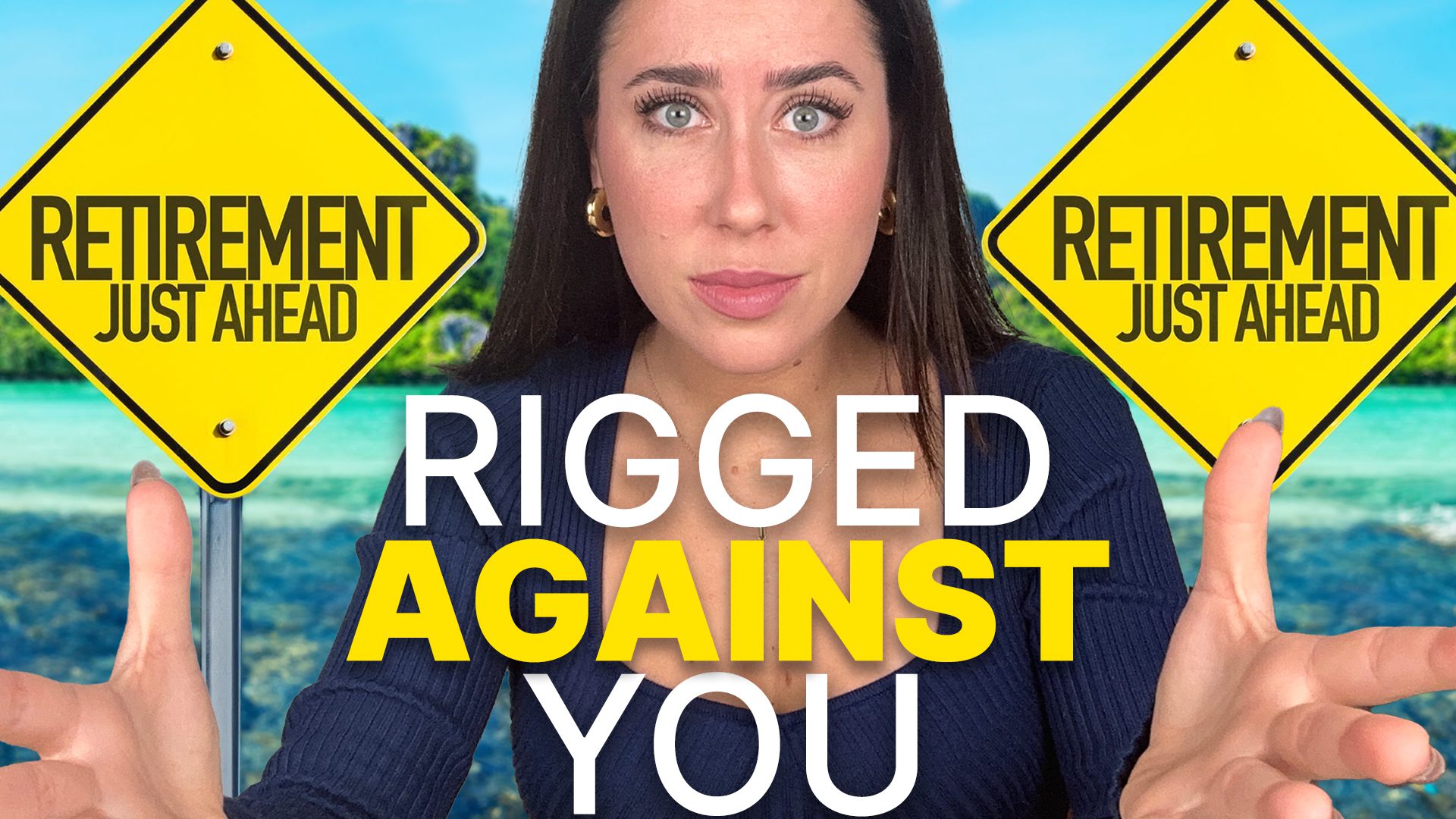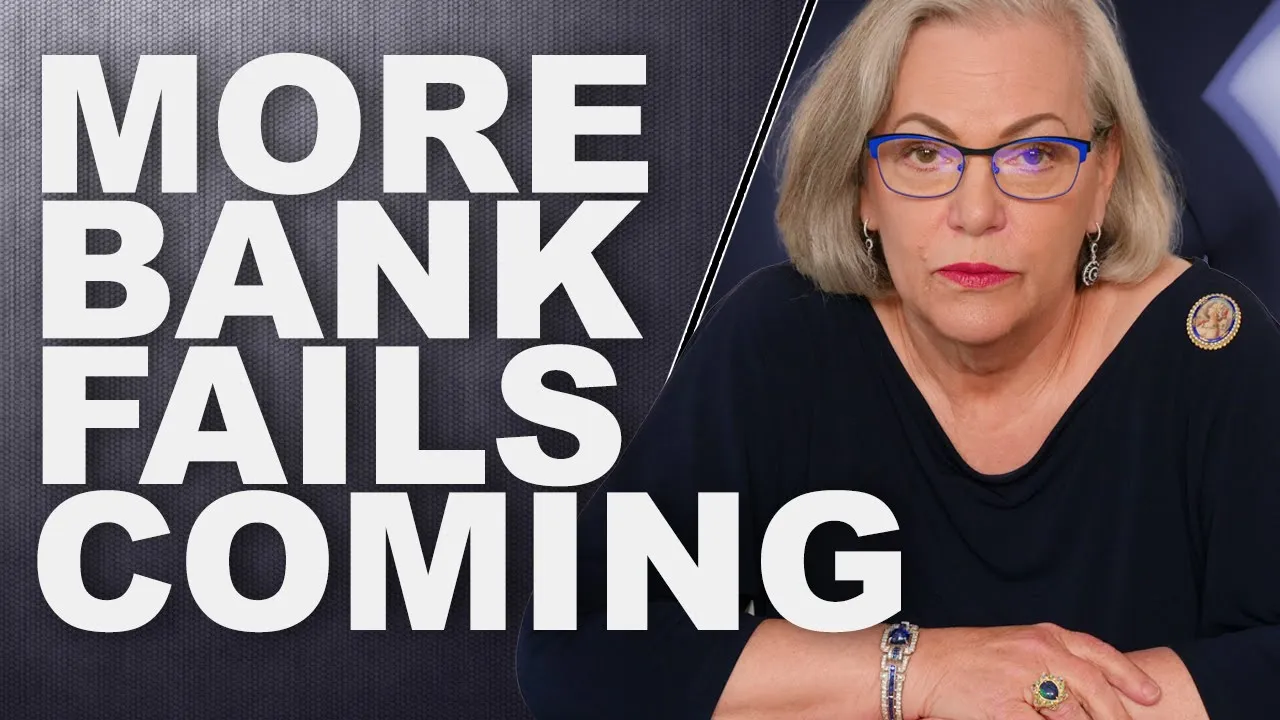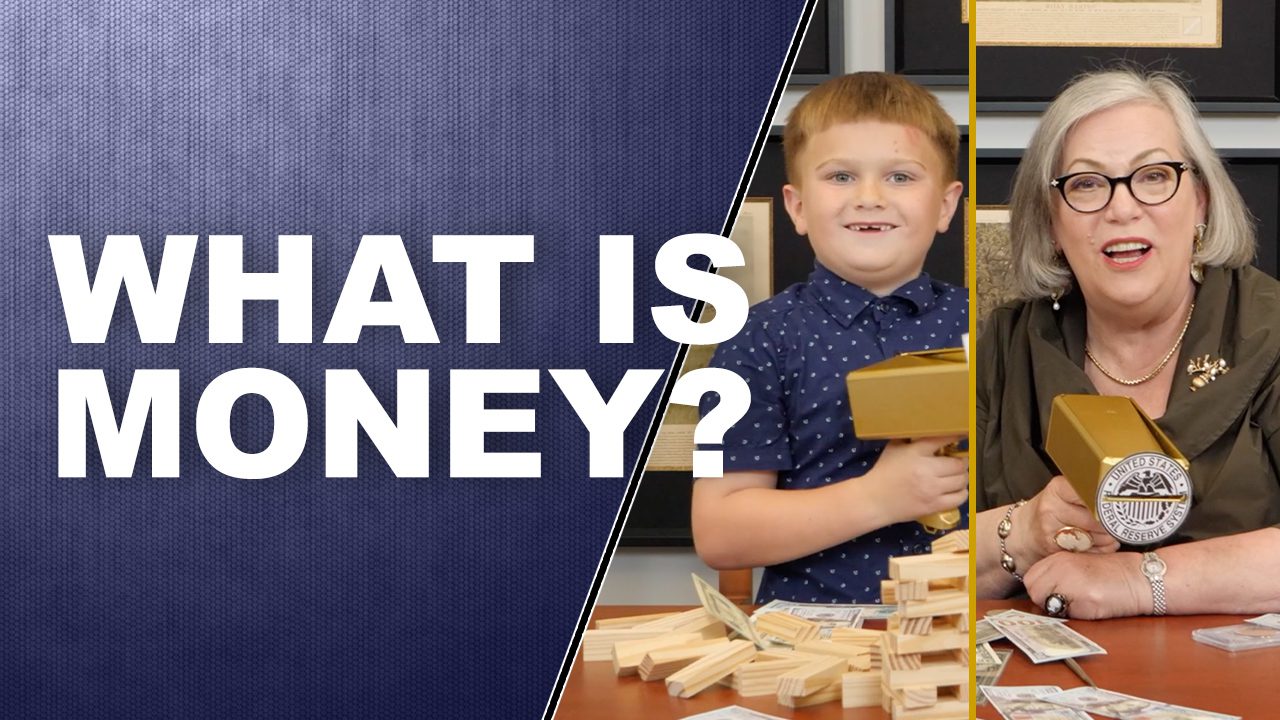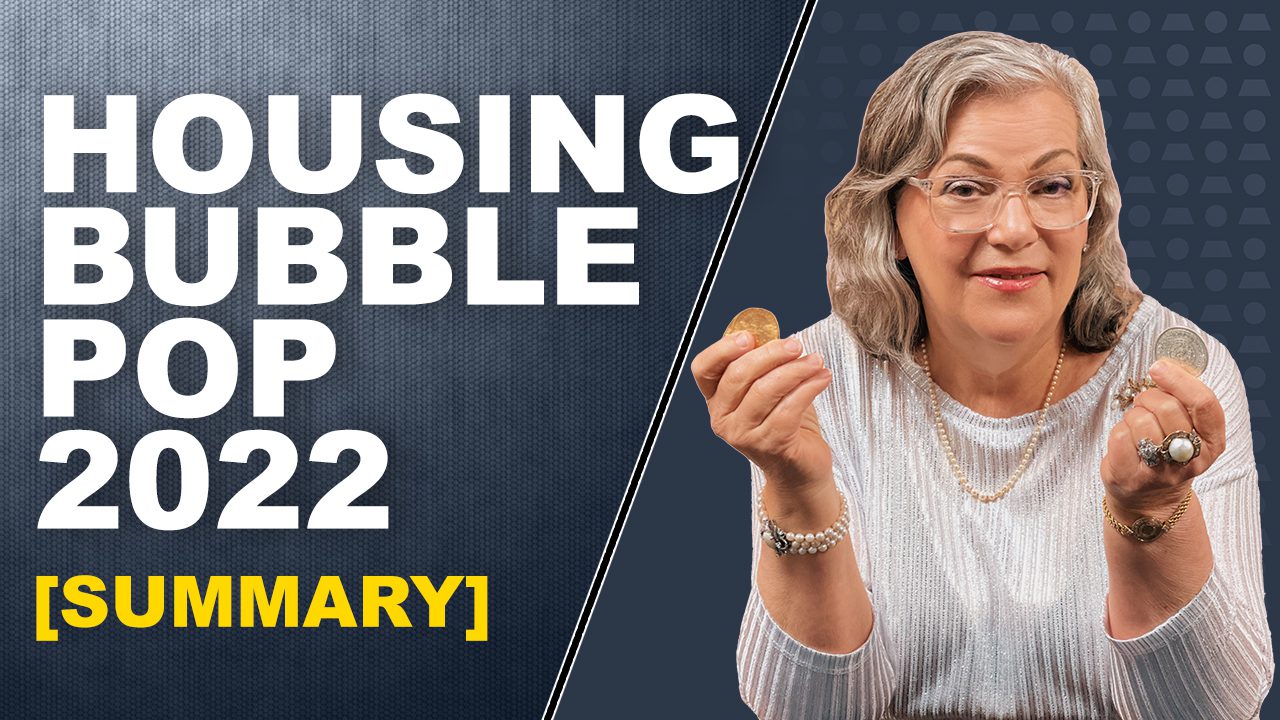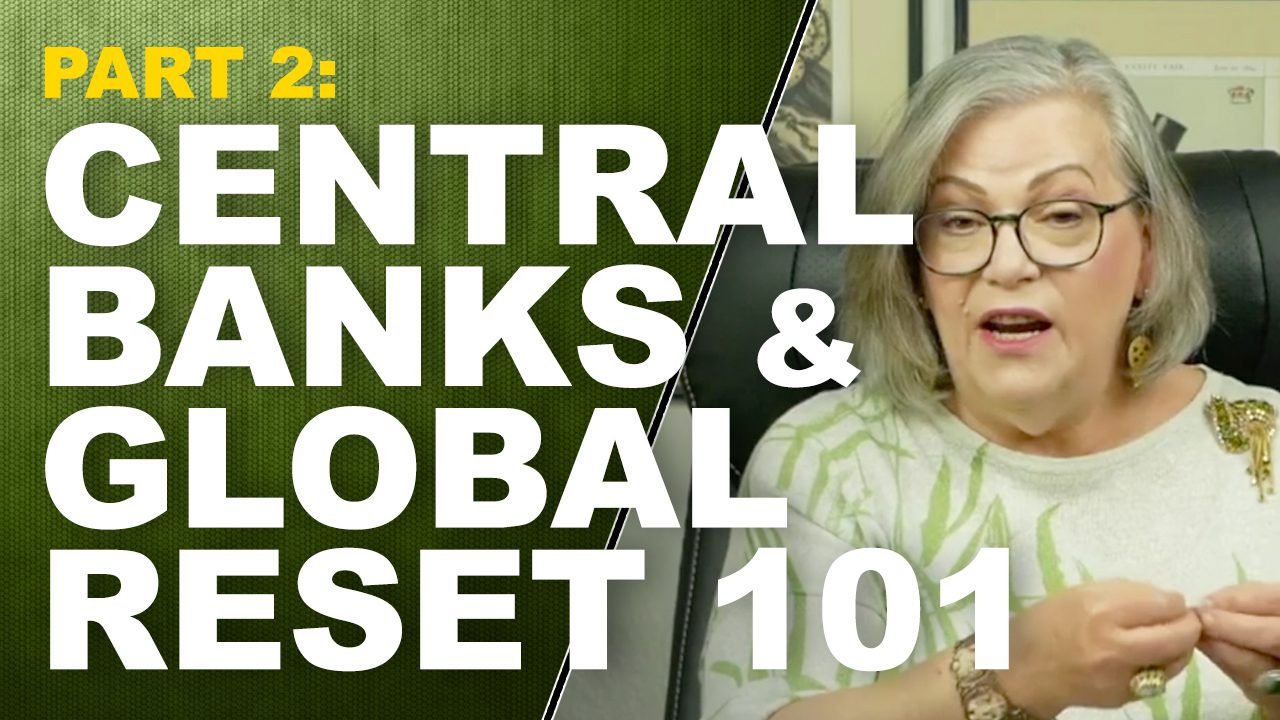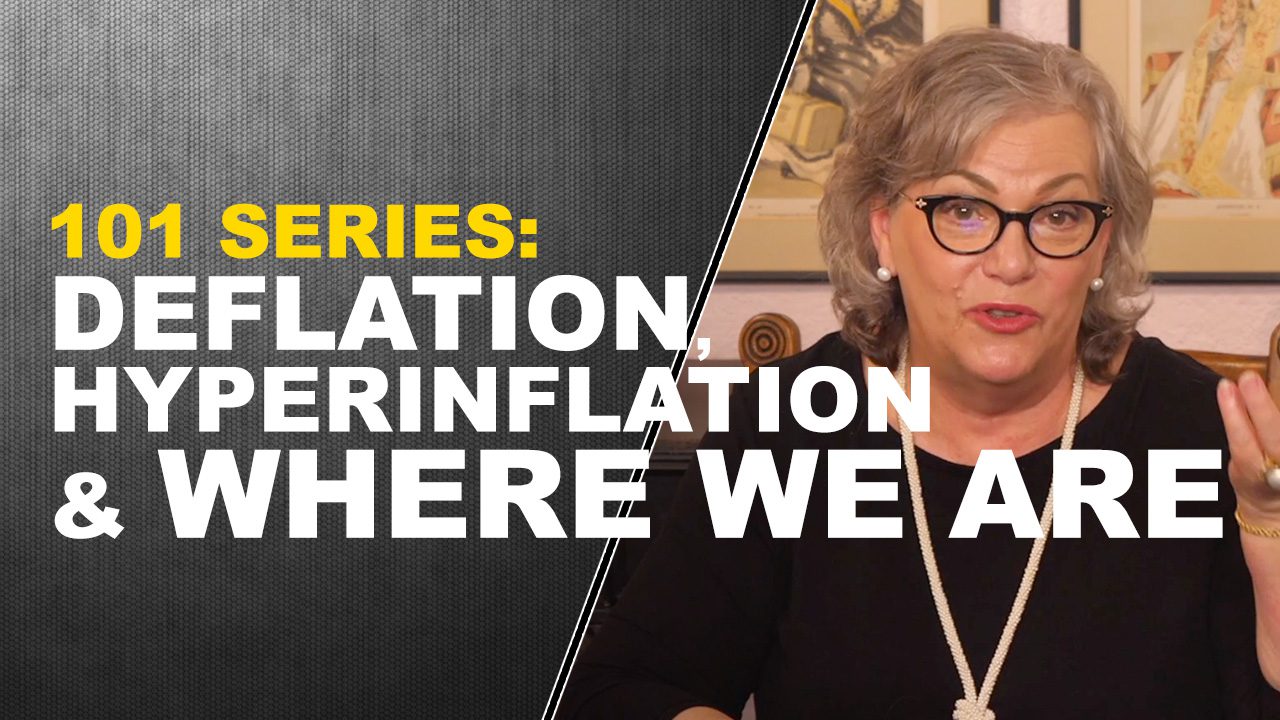CENTRAL BANKS & GLOBAL RESET 101: [Pt.1] Banks Buying Gold Before the Currency “Resets”
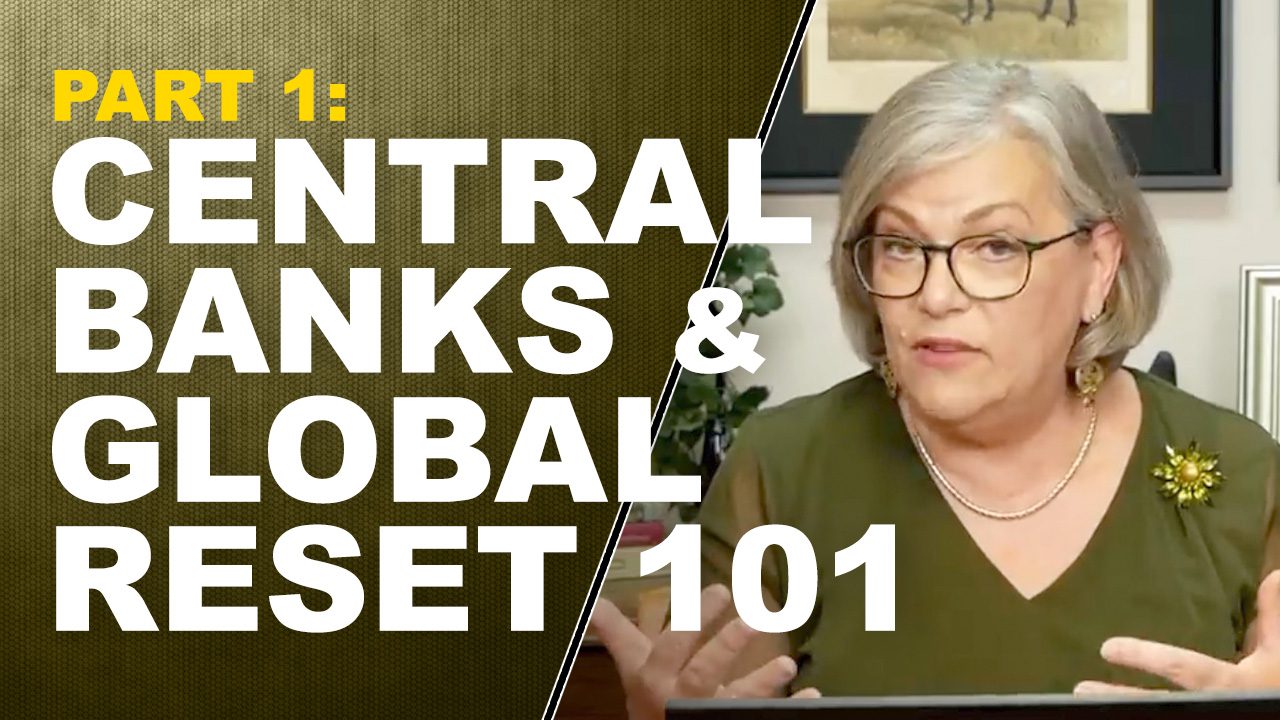
In this video I will highlight my insights over the last few years on Central Banks and what is now moving into the Global Reset. I’ll break down these subjects in the simplest way possible so you can not only understand what’s happening, but also exactly what you can do about it. How many times can you be lied to if you do not know the truth? My passion is in showing you the facts and data so you can protect yourself while you still can. Because when it comes to your money, if you don’t hold it, you don’t own it. Tangible assets are key and so is the right strategy for navigating both the pre and post-reset economy. This is what I’ve been studying for over 50 years and I’m here to show you the truth behind the curtain…
TRANSCRIPT FROM VIDEO:
Lynette Zang:
If you want to be the first to get notified. When I do urgent videos on the economy and the global reset, make sure to subscribe to our channel and click the bell icon. We’re getting new information daily, constantly, sometimes multiple times in a day, actually, always multiple times in a day. And when something is important or affects you, I will absolutely come on air and let you know about it.
Lynette Zang:
You know, people always think that the central banks can just keep this game going forever and ever, and ever. What they don’t realize is that it’s always an evolution toward the reset and they always ask, well, when is this going to happen? That’s what we’re going to talk about today. Welcome to ITM Trading. I’m Lynette Zang, Chief Market Analyst. And I’ve been studying currencies since 1987. And I developed a strategy that was based upon those repeatable patterns. You’ve got to understand what the life cycle is of a currency as well as a financial system. So in the beginning, there is gold because gold is good money. Why? Well, number one, it takes labor and energy to pull it out of the ground. So in the beginning it was labor. You would trade your labor for someone else’s labor, which is a really fair way to do it.
Lynette Zang:
But there were challenges for the government if they did that because on a gold standard, if they wanted to tax you, you would know about it and you might not go along willingly. So in 1913, they started the transition, the powers that be the elites, the governments and the central banks, started the transition to Fiat. But at first, prior to two to 1913, it, the ratio was one to one. So you could exchange a one-ounce gold coin for a $20 bill or a $1 bill for a 20th of an ounce of gold. And they were interchangeable. So people, salaries were paid in them, etcetera. Once they installed the federal reserve, that shifted from a one-to-one basis to a 2.4 to one basis, that is a devaluation. And they did experience a lot of inflation when that happened. But what they did that nobody knew was they kept that exchange ratio the same. So even though officially, and to the amount of paper that could be printed, it was 2.4 to one. If you were the normal person, it was still a one-to-one. You could walk into any bank and convert that $20 bill into a one ounce gold coin. Now, of course we know what happened in 1929, all of that hyperinflated money as they were going through that transition. Well, it went into the banks first and then the banks divvied it out to stock some bonds and real estate. And of course, once the markets were overvalued and we then went to a perpetual central bank system, because up to this point, central banks only lasted normally 15 to 20 years. Now we have it perpetually. This was to control the speed and rate of inflation, which frankly, the central banks have done quite well over time. Not that they’ve eliminated that certainly not, but from the original dollar, we all know because we talk about it all the time. There is now officially, according to the federal reserve, less than 3 cents left. And why don’t we know this because by design inflation creates that nominal confusion. So you get paid and you look at the numbers, but you don’t really see the value or the loss of value. You don’t understand it, and that’s how they can get away with it. So for governments, they get to tax you without having to go through legislation for corporations because their goods and services are what inflation is gauged upon. But the average wage never keeps up with that inflation, as we all know, well, even though nominally, in terms of numbers, it looks like you’re getting paid more. The value of those dollars are less. So this is the transition. What you’re looking at here is the transition through a normal life cycle. Once we went completely off the gold standards, governments couldn’t convert anymore.
Lynette Zang:
Then we went to a floating rate system. Then in the early two thousands, once the Euro was created, the currencies pegged to either typically the U.S. Dollar or the Euro dollar. Now what does pegging mean? It means that they aligned themselves with that other currency so that they could, when they do that, then if they’re pegged, then that currency must move in lock step with whatever currency they’re pegged to. So here in the U.S., If our government does a monetary policy like QE, which we’re going to talk about in a second, well, any of the currencies that are pegged to the dollar, like China is a great example. They have to do whatever they can to maintain that peg, whether it’s to print more money and do QE themselves to lower the value in tandem with the dollar or having to go in and buy it. But either way they have to maintain that. And so their policies have to be similar to whoever it is that they’re pegged to. The problem is, is as of actually January 15th and maybe some of you were around. And remember when this happened, January 15th, 2015, the current peg system began to break down. And the first indication of that was the Swiss surprise. When the Swiss central bank was tied, their currency was tied to the Euro and they kept reassuring everybody through the IMF and in all of their announcements that maintaining that peg relationship was critical part of their policy up until January 13th and on January 15th, bam, they severed that relationship that also let the global central bankers know that it may not be quite as coordinated an Endevor amongst them as they once thought, because frankly the Swiss central bank went rogue, but that’s when this current break down first happened. After that we had the Chinese yuan to the U.S. Dollar breaking that peg breaking that normal well, what they created as normal anyway, relationship. So here we are in 2019, well look, the central banks all got together and they did that global QE and they just pushed those debt levels up as high as they could with the interest rates as low as they could. And we saw that they can’t stop. They can’t change that. They can’t take that Punchbowl away. They can’t do it. The markets fall apart. And I’m going to talk a little bit more about that, but make no mistake that the end of this cycle was really triggered and indicated back in 2015 and we’re four years. And then some after that, and now we’re going into a global slow down, can they print more money, do another round of QE, lower the interest rates to zero and negative, of course, and they will. They’re not going to have any choice because they’re out of tools.
Eric Griffin:
I’m curious what a global currency reset looks like. What are the indications and warnings that it’s about to happen and what happens when it comes any historical references? So the very first part of that is I’m curious what a global reset looks like.
Lynette Zang:
So what I’ll say to that is that this will be the first time in history that we will actually have had a complete global system reset. Although you might want to liken it back to the thirties because everybody was on the gold standard until after we went off the U.S. went off the gold standard and in well, I guess that was the seventies and Switzerland was the last one to, to convert to full fiat in 78. So I guess it would be more the seventies, they started the, but they all started the transition to Fiat. So they all went off the gold standard, you know, early on or started that transition until they concluded in the seventies. So there’s a lot of
Eric Griffin:
It would’ve been a reset. It was more like a shift, I think is what you’ve always said in 19.
Lynette Zang:
It wasn’t a full reset. It was, we shifted from a gold standard to a debt standard, but always around any reset. There’s a tremendous amount of chaos. So even if we think back to the seventies, what was going on, then, you know, you had the Vietnam war, you had the protest, you had the oil embargo, you had 37% official inflation. You had a stock market imploding, women’s lib the civil rights movement. So when you see things that are super insane, like they are right now that they absolutely defy all logic. That’s the indication.
Eric Griffin:
I see no end to precious metals manipulation, as far as I can tell it will go on for as long as the powers that be want that. So what is your opinion on if and when the manipulation will stop?
Lynette Zang:
That’s a very good question. I think that the manipulation will stop when they’re ready to actually perform the reset, because that’s how the reset is done. It’s a reevaluation of Fiat money. So in this country dollars, but whatever the local currency is against the monetary metal, that’s what it’s going to stop when they’re ready for us to move into the new money standard.
Eric Griffin:
Do you think there’s any way it could break prior to it?
Lynette Zang:
Yes. If demand exceeded. I mean, if somebody did, if there were a multiple people that did demand delivery on the Colmex exchange and then that would create, yes. I think that there certainly would, the markets can do it. The individuals and the market participants are really greater than the ones that are controlling the market. But the problem is, is that people believe the lies and the lies just keep getting bigger and bigger and bigger and just believe them so they can do it until people stop believing the lies. And that’ll be either when they’re ready for it, or when there’s some other trigger event that, that you can’t ignore. So we’re seeing, I’m seeing a lot of pattern breakdown and pattern shifts these days. I mean, weekly, I’m seeing new pattern shifts and breakdowns.
Lynette Zang:
But I also find this really interesting looking at those three currencies that they want us to think of a safe Haven. So the dollar, the Japanese yen and the Swiss Frank, well, these, this represents our gold holdings. And frankly, that hasn’t changed. I think since 1952, it’s exactly the same, but let’s see, okay, this is Japan’s gold holdings, and this is Switzerland’s gold holdings. Why aren’t they just buying Bitcoin or other cryptocurrencies they’re creating their own for sure, because that’s definitely the direction they want us to go in, but they’re adding to their gold positions on February 7th, Venezuela officially reset their currency to gold. And it went up 2696.452 times. Gold is the primary currency metal. It is all intrinsic value. It has value whether a government says it does or says it doesn’t, that’s not relevant. And it has value because it is used across the entire scope of the global economy. So there’s always demand. But what happened to silver? Well, silver went up as well because silver is the secondary monetary metal that went up 2452.04 times. So yeah, they both went up well, in reset to the Venezuelan Boulevard, but gold went up more because it is the primary currency metal. For me, the function of silver is to maintain your, it’s a barterable position. It’s heavier, it’s bulkier. It’s more challenging to use if you’re going to execute the strategy that you know is based on my studies, I’ve been studying currency since 1987. And the strategy that we’re executing here, I’m not saying that you can’t do silver because that is definitely a part of it. But in a reset, it should be clear that gold outperforms silver nine months after a planned reset is when mortgage principal balances and payments get reset, because this too is a contract. And in this case, the debt contract, if it’s as long as it’s fixed rate, if it’s variable rate, that’s not what I’m talking about here, but if it’s a fixed rate mortgage and they cannot do anything for a year by contract typically. So that’s why about nine months is when they would normally get a notice. Okay, there are lots of things in the strategy that pertained to that, which is why I’m talking about it. This, my friends is a safe Haven asset. It is how they do a reset. So that’s why personally, you know, for my barterable position, I do have both gold and silver, but more silver than gold for my wealth preservation part. And for the part where I also want to grow my wealth base, frankly, I really only do that in gold. And that’s why.
Lynette Zang:
And what I want you to understand most and why this is so important is because resets are part of the fiat money system by design, but they want that reset to occur slowly. So everybody asks me when the big reset is coming, and you need to understand that the final reset is just the final blow off when all confidence is lost. There’s a good reason why gold and silver have been money throughout the years because of their use of variety of uses across the global economic spectrum. Now, of course, the federal reserve was really created to take care of banks. But what I love is that they have that. They say that they want price stability. You’re going to look at the evidence and then tell me if you think that these prices look stable, because the other thing I’d like you to do is we’re going through these slides is when were you born and look at how much value has been lost since the day you were born? So we’re going to start at the beginning in 1913, but what I really want you to understand about this is whether it is a $1 silver certificate, a $1 federal reserve note, a $1 silver coin, or can you see this? An itty bitty $1 gold coin. In the beginning, they all had the same value, or at least the same purchasing power value. Of course, once this game began, then we had an order to pull that off. They dropped the reserve requirements, and then we were off to the races because truthfully, the value of this federal reserve note had actually declined by a pretty substantial amount, but because all of these were allowed to remain interchangeable, which is how they do it. People didn’t realize it, but the average income tripled more than tripled during that same period of time. And for people think about this, if you can use all of these different coins interchangeably, then in your mind, they all have the same value. And they did that really for 20 years, all that new money printing, you know, created the roaring twenties. It created the market, the what happened in 1929 and the great depression, which was then of course, we know used to take the gold out of the system. So between if you were born between 13 and 33, by 33, the dollar had lost almost 22%. And through inflationary reset of its value, then of course they revalued the gold to reflect the $35 an ounce. So you can see in this cartoon, from that period of time, they broke the gold standard. They says, boy, now I can feel like I can do something well, I’m going to let you be the judge on that.
Eric Griffin:
All right Steven asks, if America is able to print as much money as it wants, and then buy lots of assets, including as much gold as it needs, will it be in a great position when it decides to implement the reset?
Lynette Zang:
Well actually any country that is sitting on a lot of gold and perhaps that will have to be proved, which is one of the challenges with the central bank, right? I can’t guarantee what central banks are really holding. Is it what they report? Well, again, those accounting tricks and gimmicks. However, having said that since the primary, most important function of gold is to hold its value, hold its purchasing power value. Whoever holds that gold, whether you’re a central bank or an individual, we have to see what’s going on with Italy to see who really owns government gold. Yeah, you’re going to be positively impacted because you’ll retain your ability to purchase other assets when all that inflation is burned out of them. So yeah, that definitely. And in fact, for the first quarter…
Eric Griffin:
You’re saying that governments, that own gold will be better off
Lynette Zang:
Absolutely, anybody that owns gold will be better off, anybody, but yeah, certainly governments.
Lynette Zang:
I just feel like you really need to understand that when you have a system that is pegged together, it’s connected and those connections are now breaking and not just with the currencies, but actually with the entire global financial system, because we know that whether it’s countries or its markets, they are all incestuously intertwined so that wherever this occurs, wherever the big blow up starts to happen, whether it is in Europe or it is in China, or it is in the U.S. Or it is in Japan or, you know, it’s in great Britain, wherever that starts, it’s going to be transmitted globally because frankly our whole financial system is pegged together. We’re all together. So when the global central banks are working in a synchronized way, well, we had all, you know, all fiat money assets targeted that were targeted for reflation. We had all of them reflate. When central bankers tried to take that free money away, the markets were simply not having any of it we’re between a rock and a hard place. And honestly, this is why the system has to reset. Well, what does it reset against? We’ve talked about it so many times because when the system collapses gets what collapses with it, confidence of the public, and that’s where gold really comes in. Now, currently, since the goal is to keep you in the system, a rising gold price is an indication of a failing currency. So they have to control that too. And that’s easy enough to do with derivatives. However, when they’re ready to do the reset or they’re forced to do the reset, they can hold down the official price of gold, like crazy. I mean, this is the Venezuelan bolivar, but when they’re ready to do the reset, that’s when they revalue the currency against the physical gold and gold, in terms of that currency flies, it goes up dramatically. That’s also when all that fiat money inflation gets burned out of the system. So what happens with gold? Well, guess what, when people lose all confidence in the fiat money in the Fiat system, they look to real money, they look to gold money. And so that takes us all the way back to that cycle where gold has always been at least a component of the new gold system, because that’s how they’re going to get you to trust new system again, until ultimately they start to abuse it and remove gold backing. If the new world reserve currency is going to be the SDR, which is what I think it’s going to be, well there, it started out as gold. And they’ve talked about putting a component of gold in their basket again. Well of course they will, they can’t do it now. A lot of people say, well, China is going to back their currency with gold. No. So you need to have physical gold, become your own central bank really, and hold it outside of the system. You can always convert it to any Fiat money, any money, any good, or any service because it’s real. And if you hold it, Hmm, guess what you own it. That’s why shields are made of metal. Not paper, not promises and a good shield is not intangible. It’s real. And it protects you. That’s why it’s always part of a good money system. It’s why it’s been there in the past. That’s why it’ll be there in the future.
Lynette Zang:
So it’s food, water, energy, security, barterability, wealth, preservation, community, and shelter. These are all important things to have in place so that you can weather this reset and sustain your current standard of living. So share all of these videos. And if you haven’t started your strategy yet, or if you don’t have a plan in place, just click that Calendly link below and talk to one of our consultants. We work very closely together. They’re going to talk to about the strategy that I created in, well, I started studying currencies in 1987, so it took me a while to see the patterns, but it’s the strategy that I originally created for myself. And then there’s lots of smart people at ITM. We come together and have made it better and better and better. So click that Calendly link, set an appointment. If a time isn’t available, call us and set whatever works for you. It is time to cover your assets. And here at ITM trading, we use the wealth shield and the foundation of the wealth shield is physical gold and silver in your possession runs no counterparty risk fights. Inflation protects your purchasing power, get it done. And until next we meet, please be safe out there. Bye-Bye.
SOURCES:
Global Currency Reset – Central Banks and Pegging – Stocks Crash 2007-2009 Qs & A’s –
Streamed live on Apr 6, 2017
https://www.youtube.com/watch?v=BBP42iSRNac
YOUR QUESTIONS: Gold Value, Mortgages, Reset, and more. Q&A w/ Lynette Zang and Eric Griffin
Streamed live on Dec 19, 2017
https://www.youtube.com/watch?v=rA07g6hhdqM&t=1166s
THE GOLD & SILVER RESET: How will they perform? Thank you Venezuela!
Streamed live on Mar 29, 2018
https://www.youtube.com/watch?v=YizaIL79dzQ&t=8s
[Part-4] BRACE FOR IMPACT: How Gold and Silver Perform During Currency Resets by Lynette Zang
Streamed live on Jun 22, 2018
https://www.youtube.com/watch?v=bfgHxiWmg0Y&t=1s
Late Stage Markets and the RESET
Streamed live on Mar 28, 2019
https://www.youtube.com/watch?v=AdQUeAAlFIc&t=17s
HOW MUCH GOLD AND SILVER IS ENOUGH IN RESET?
Streamed live on May 21, 2019
https://www.youtube.com/watch?v=0McCwo2qrDI&t=46s
FED’S BIG POLICY MISTAKE…HEADLINE NEWS WITH LYNTTE ZANG
Streamed live on November 9, 2021
